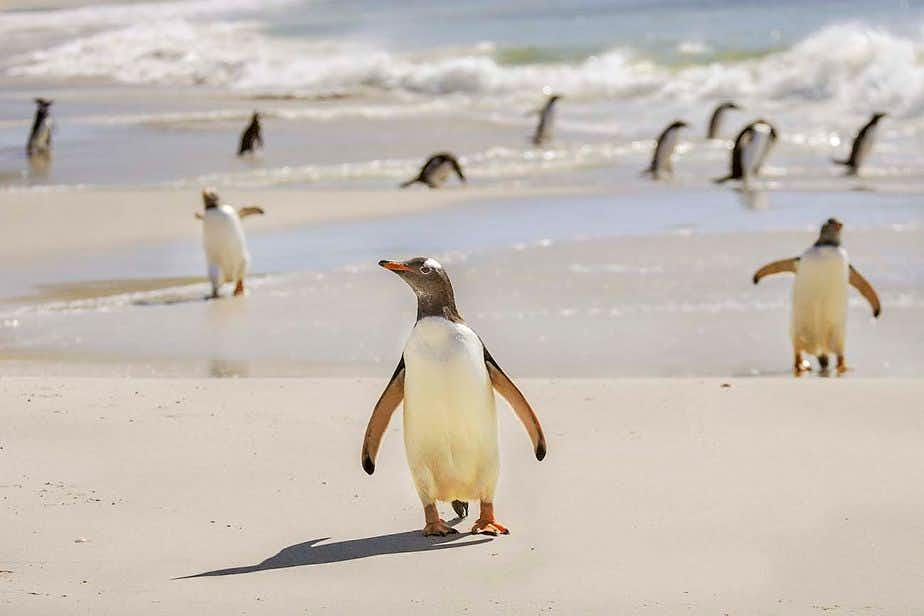Login
No account yet?
Create Account
See five species of penguin
The Falkland Islands are home to no less than five different penguins
4 travellers have this on their Bucket List
0 been here
Not many people know that the Falkland Islands have a remarkable number of wild animals, including no less than five species of penguin! You can best find them on the beach.
There are five different kinds of penguin present on the Falkland Islands. They will waddle right past you on their way to the sea or back to their colony. And if you sit down quietly, they will come even closer. Keep an eye out for the Magellanic penguin, the rockhopper penguin, king penguin, macaroni penguin and the gentoo penguin.
They display different kinds of behaviour depending on the season. In spring, you can see penguins breeding, courting and brooding on their nest. This is also when they might steal rocks from other penguins’ nests. In the summer you can see the penguin chicks, which are very cute. The best place to see them is on the beaches of the islands.
King penguin
The king penguin has remarkable colouring, not too dissimilar from the emperor penguin which can be found in Antarctica. But the bottom of the king penguin’s beak is more pink/yellow, while its chest is a brighter yellow and orange. This kind is also smaller (around 85 centimetres) and lighter (15 kilos).
Their feathers have distinctive colouring: their shoulders are silver-grey, but the bottom of the feathers on their backs are dark blue. There are an estimated two million king penguins on the Antarctic islands. Some of these can be found on the Falkland Islands, and don’t mind human presence.
Rockhopper penguin
This kind of penguin is quite special; they like to hop from rock to rock, hence its name. There are two kinds: the southern kind and the northern kind. They are only around 55 centimetres tall, the smallest penguins around Antarctica.
Remarkably, these small creatures are the most aggressive of the penguins. You can distinguish rockhopper penguins by their red-brown beaks, their striking yellow eyebrows and their red eyes. They are frequently spotted on the Falkland Islands.
Gentoo penguin
The gentoo penguin makes a very distinctive sound, close to trumpeting. They can also be distinguished by the their colouring: they have a white triangle on their heads from eye to eye, their backs are black and their chests are white, with bright orange beaks and orange feet. The gentoo penguins grow to around 80 centimetres in size.
They mostly eat krill and dive up to a hundred metres to get it. They are the fastest swimming birds in the world: they can reach speeds of up to 27 kilometres an hour. They live on the Falkland Islands and the Antarctic peninsula.
Macaroni penguin
This kind of penguin isn’t very well known, but it is the most distinctive. Macaroni penguins are about 70 centimetres in size, have the usual black and white colouring but have remarkable long, yellow eyebrows.
English explorers who first saw these penguins were reminded of an extravagant style of fashion back in England, called Maccaronism. A macaroni wore flamboyant clothes inspired by the Italians they met on their tours of the continent.
Macaroni penguins eat krill and small fish, and can mostly be found on the subantarctic islands, including the Falklands.
Magellanic penguin
The Magellanic penguin can be found in South America, but also at the Falkland Islands. They look similar to the African penguin, who live in southern Africa. This breed of penguin is named after the Portuguese explorer Ferdinand Magellan, who lead the first sailing journey around the world.
The males come ashore in September to make nests, under ground or in the tussock grass. The eggs are laid in October and usually hatch in November. They raise their chicks with much devotion until around February. You can see these penguins in abundance on the Falkland Islands and get quite close to them.
4 travellers have this on their Bucket List
0 been here


